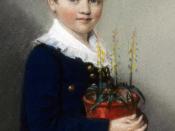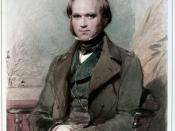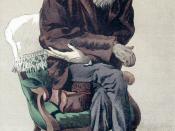Charles Darwin was born on February 9 in 1809. As the son of a wealthy British physician, Darwin enjoyed a well-educated background. Darwin attended medical school at the University of Edinburgh in England. He dropped out of medical school after watching surgery on a patient without anesthetics. Darwin then enrolled at the University of Cambridge to study for the clergy.
John Henslow, professor of Botany at Cambridge, sparked an interest in Darwin to study natural history and to become a naturalist. Henslow recommended Darwin to take the position of a naturalist aboard the ship the HMS Beagle. As a naturalist Darwin was to keep careful recordings and to study the wildlife the ship encounters on its voyage.
Henslow also gave Darwin the book The Principals of Geology by Charles Lyell. The book emphasized the great age of the earth and the principals of uniformitarianism. Uniformitarianism is the geological structure of the earth that resulted from cycles of observable processes operating continuously through time.
Darwin applied these principals in developing his theories.
In 1831, Darwin, age twenty, left his native England aboard the ship the HMS Beagle. The Captain of the Beagle was Robert Fitzroy, an illegitimate ancestor of King Charles II. The Beagle traveled to South America and the South Pacific over the course of five years. Some of the places that the ship traveled are Brazil, Argentina, the Falkland Islands, New Zealand, and of course the Galapagos Islands. The ship would often leave Darwin on his own to explore the region and picked up by the ship several months later. When arriving on the Galapagos Islands Darwin became fascinated with the ecosystem and collected most of the information needed for his theory and the book he authored The Origin of Species.
Darwin's first question when arriving on the Galapagos...


